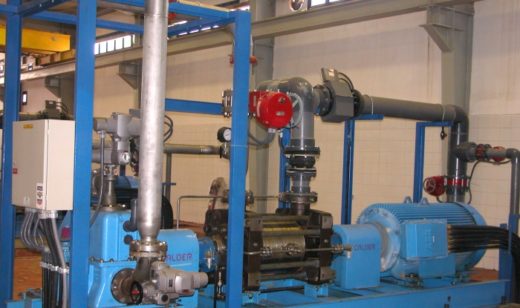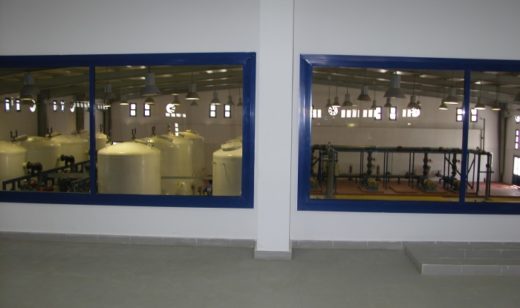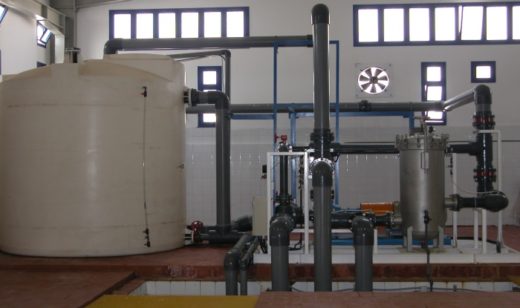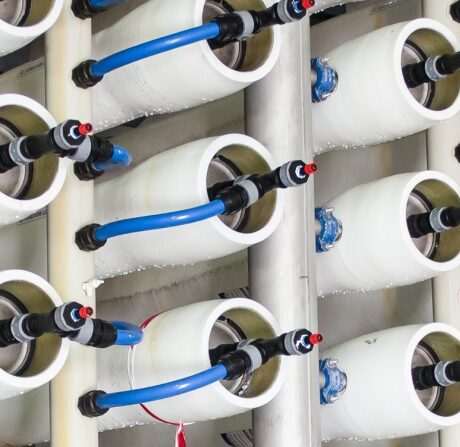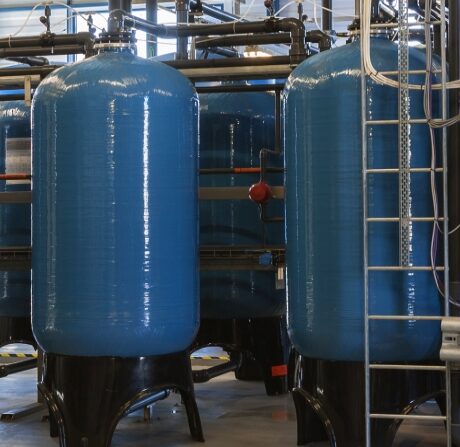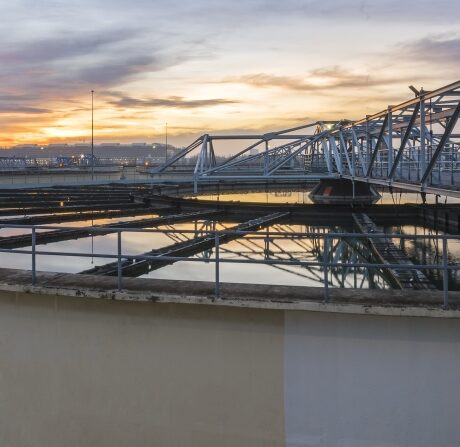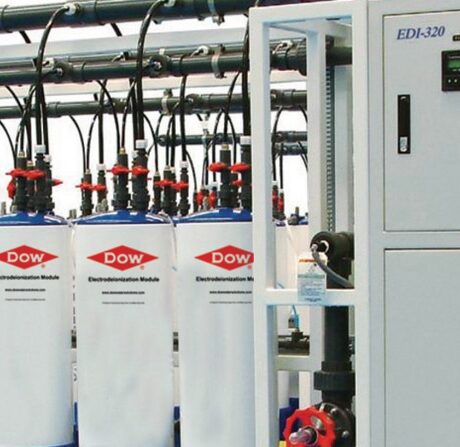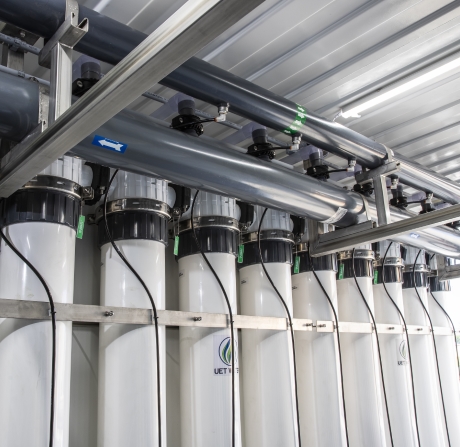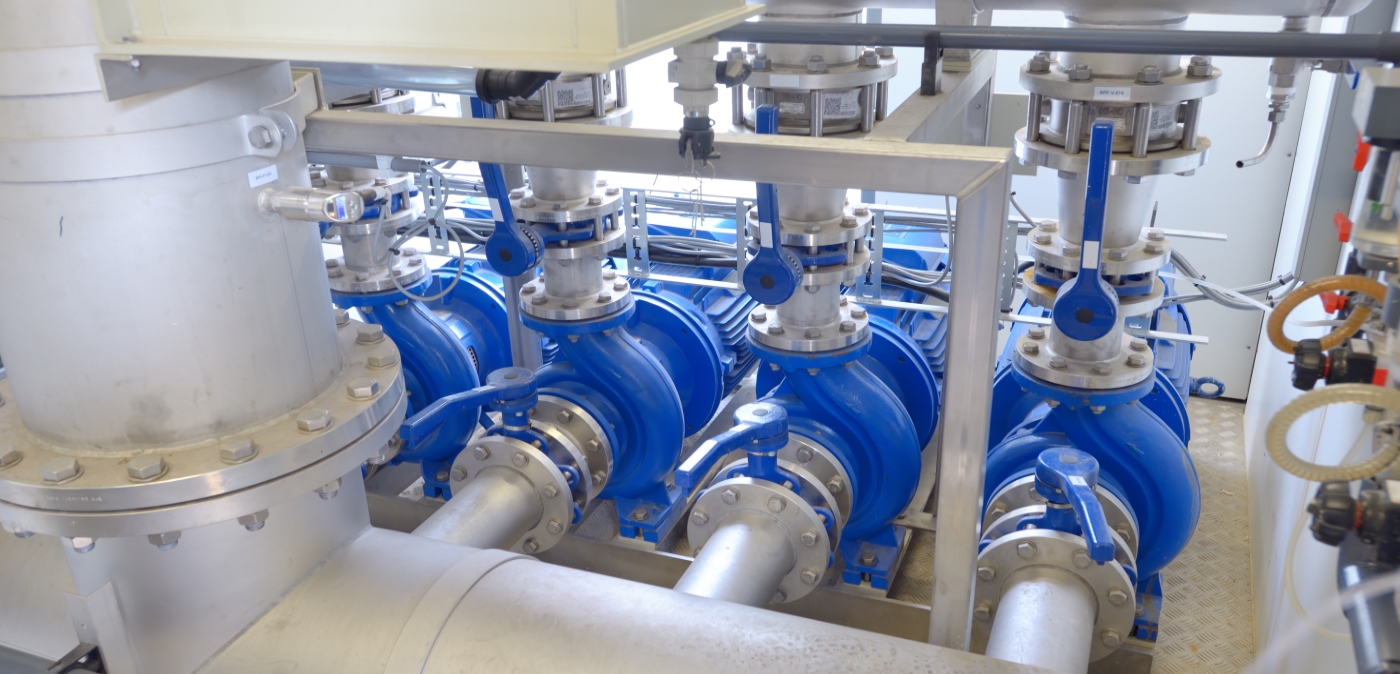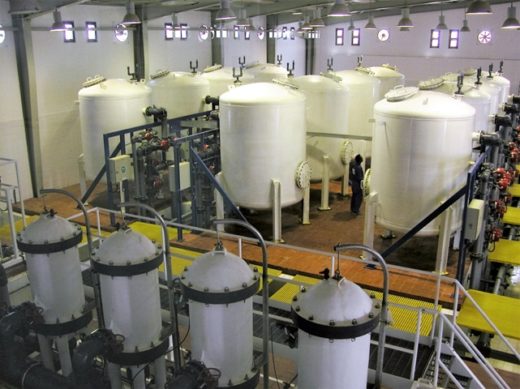
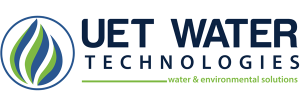
Reverse Osmosis is a process where you demineralize or deionize water by pushing it through a semi-permeable reverse osmosis membrane under pressure. It is the technology used to produce desalinated water from seawater.
Reverse osmosis can remove many types of dissolved and suspended species from water, including bacteria, and is used in both industrial processes and the production of potable water. The result is that the solute is retained on the pressurized side of the membrane and the pure solvent is allowed to pass to the other side. To be "selective", this membrane should not allow large molecules or ions through the pores (holes), but should allow smaller components of the solution (such as solvent molecules) to pass freely.
Reverse Osmosis is capable of removing over 99% of the dissolved salts (ions), particles, colloids, organics, bacteria and pyrogens. It is very effective in treating brackish, surface and ground water for both large and small flows applications.
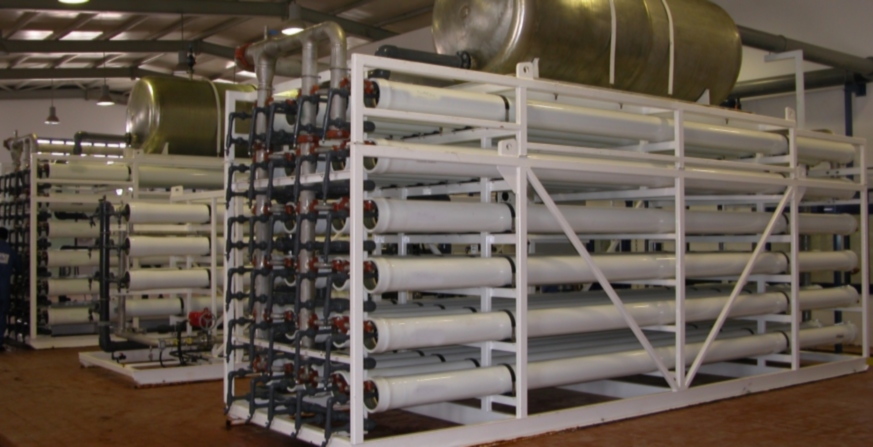
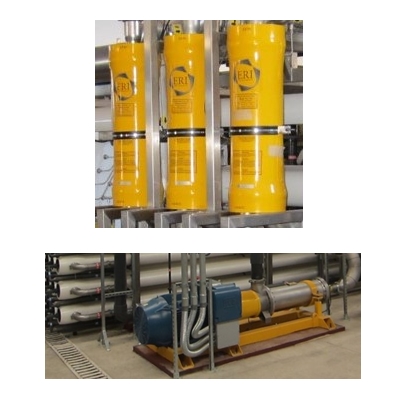
Applications
-
Water Purification
-
Wastewater Purification
-
Desalination
-
Food and Beverage
-
Boiler Feed-water Treatment
-
Agricultural
-
Coastal Hotels
-
Municipal
-
Power and Refineries




